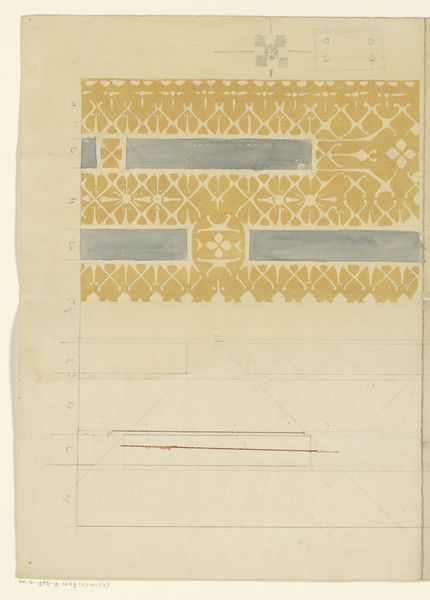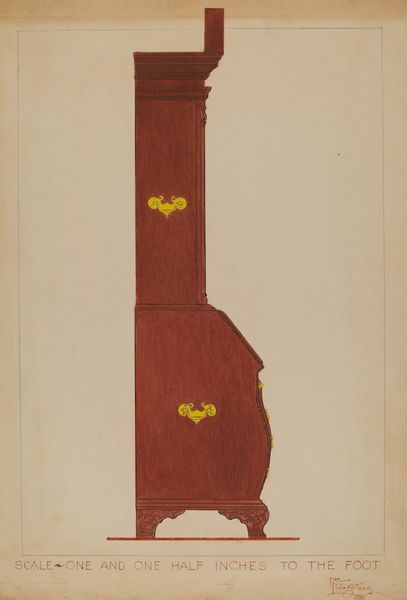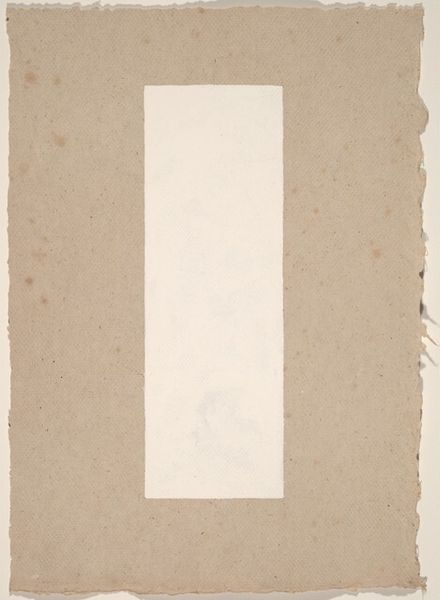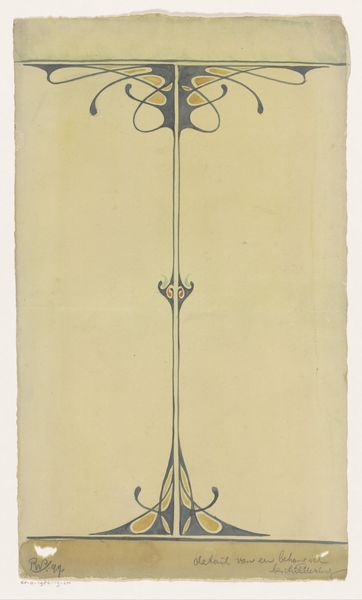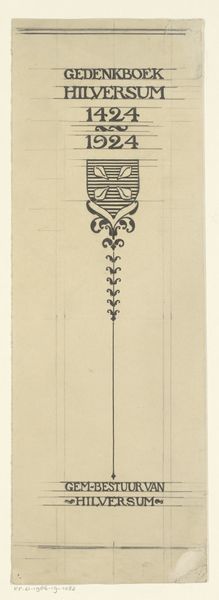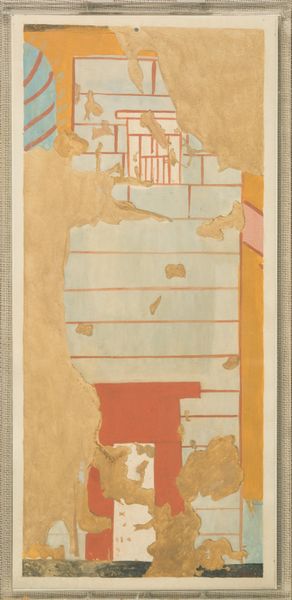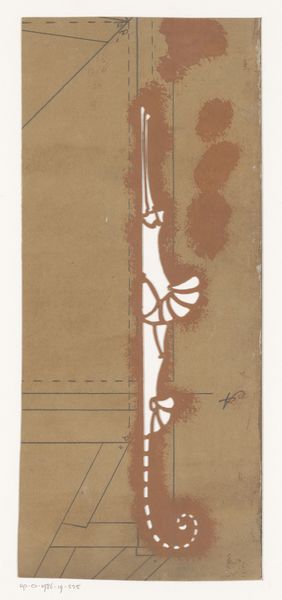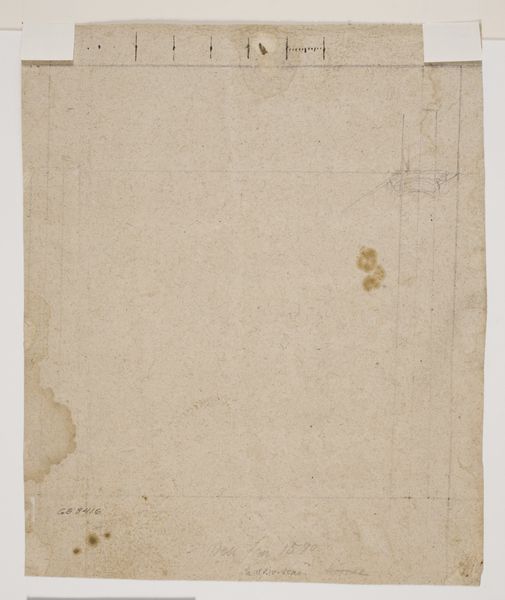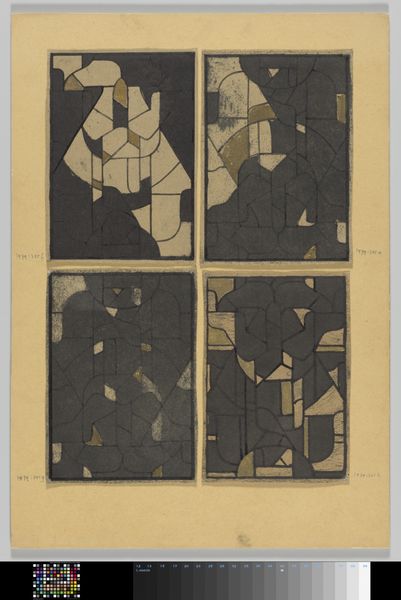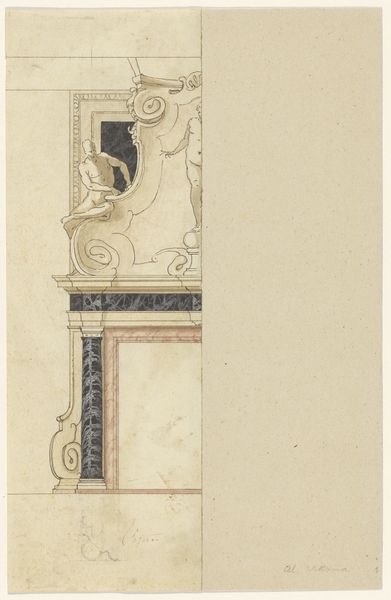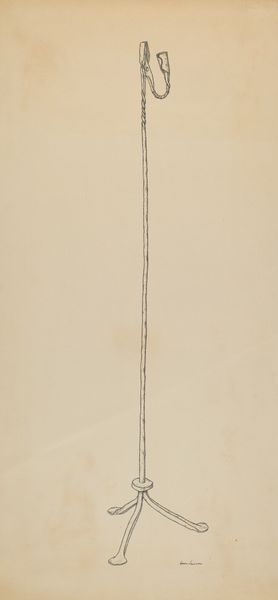
drawing, paper, watercolor, ink, architecture
#
drawing
#
water colours
#
paper
#
watercolor
#
ink
#
geometric
#
ceramic
#
history-painting
#
architecture
Dimensions: height 320 mm, width 195 mm
Copyright: Rijks Museum: Open Domain
Curator: Jan Brandes, between 1770 and 1808, created this fascinating architectural drawing entitled "Plattegrond van poort of poortgebouw"— "Plan of gate or gate building". The media includes pen and brown ink, watercolor, and pencil on paper. What's your initial take? Editor: The symmetry is what grabs me first. The precision, even. It feels very much about the labour involved in the meticulous recording of something. But at the same time, strangely unsettling. Almost skeletal. Curator: Unsettling... I'm interested in that reaction. Architectural drawings are rarely described as unsettling, but it is possible Brandes was attempting to capture something beyond architectural precision. It may be useful to reflect on the colonial project of documentation and what it represented, what power dynamics are in play. Editor: Exactly! What are we actually looking at, beyond the "gate or gate building?" I mean, look at the process – the use of watercolour to tint what are essentially lines on paper. What sort of authority did these depictions gain in the field because they seemed more “real?” Curator: We must consider what these architectural drawings signified during their historical moment. Who controlled the access, resources, labor to build these types of buildings and for whom? Editor: And this image is very deliberately two dimensional. Are these gates, were they planned or realized structures? Are they meant to control people, trade, movement in general? And what’s the role of this meticulous depiction in solidifying that control? Curator: Exactly. It allows for strategic planning. This connects to the relationship between architecture, power, and control—think about military architecture as a tool for exerting dominance. Editor: And for Brandes, what was the social and political weight of documentation? These drawings might appear objective, but they’re deeply tied to human experience, colonial ambitions, resource management. They reify social systems and control by fixing them on paper. Curator: It becomes so much more than a flat rendering on paper. Editor: Agreed. Next time I’ll think twice about a watercolor! It can represent power as much as pretty scenery.
Comments
No comments
Be the first to comment and join the conversation on the ultimate creative platform.

